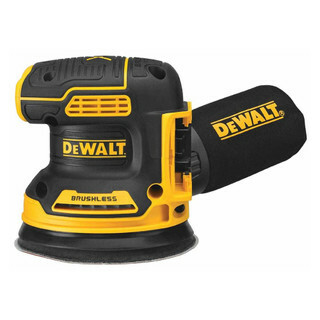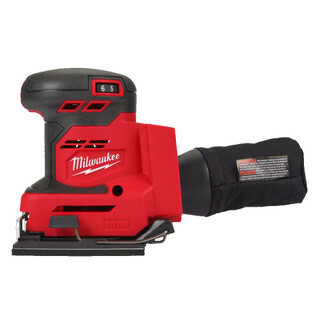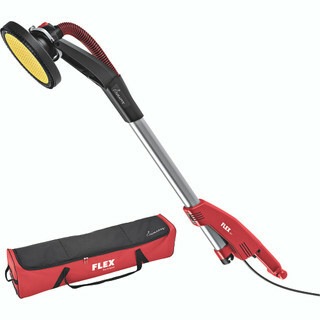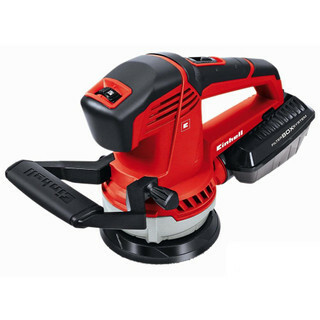Sanders
Find high-quality sanders at ITS from trusted brands like Makita, DeWalt, and Festool. Designed for versatility, our range includes belt, orbital, and detail sanders, with corded and cordless options, to deliver smooth, efficient finishes for any project.
Who Uses Sanders?
Sanders are essential tools for professionals and DIY enthusiasts alike, offering precision and efficiency for a variety of finishing tasks. Here's who typically uses sanders and how:
- Woodworkers – Ideal for preparing surfaces, rounding edges, and achieving a smooth finish on wooden furniture and panels.
- Painters and Decorators – Used to strip paint, smooth walls, and prepare surfaces for repainting or refinishing.
- Contractors – Perfect for sanding large surfaces like flooring or ceilings, ensuring a flawless finish on construction projects.
- DIY Enthusiasts – Handy for home improvement tasks, such as refinishing furniture or smoothing down edges on projects.
Sanders Are Great for Jobs Such As:
- Refinishing furniture – Use orbital or detail sanders to remove old paint and varnish, leaving a smooth surface for reapplication.
- Smoothing plaster – Achieve even, smooth walls with a long-reach or orbital sander for a professional finish.
- Stripping paint – Quickly remove old layers of paint from doors, windows, and frames with a belt sander or detail sander.
- Floor sanding – Prepare hardwood or parquet floors for refinishing with belt sanders for a uniform surface.
- Rounding edges – Use detail sanders to create smooth, rounded edges on furniture or woodwork for a refined look.
How to Choose the Best Sander
Selecting the right sander for your project depends on several key factors, including the material, surface, and specific requirements. Here’s a guide to help you choose the ideal sander for efficient and professional results.
1. Type of Sander
Orbital Sanders: Great for achieving smooth finishes on flat surfaces. Ideal for furniture refinishing and light sanding tasks.
Belt Sanders: Best for removing material quickly on large surfaces like floors or heavy wood pieces.
Detail Sanders: Perfect for tight corners and intricate work like sanding furniture crevices or edges.
2. Power Source
Corded Sanders: Offer consistent power and are great for long-duration tasks but require proximity to a power outlet.
Cordless Sanders: Provide freedom of movement and are ideal for outdoor or hard-to-reach areas. Look for battery compatibility within your existing tool ecosystem.
3. Dust Collection System
Opt for sanders with integrated dust collection systems or external vacuum attachments. These features keep your workspace clean and improve visibility while sanding.
4. Variable Speed Control
Sanders with adjustable speed settings allow you to tailor the sanding intensity for different materials and tasks, ensuring a professional finish without damage.
5. Ergonomics and Weight
For extended use, choose a lightweight sander with ergonomic grips to reduce fatigue. Compact designs are also easier to maneuver in tight spaces.
Popular Accessories for Sanders
Selecting the right accessories for your sander can dramatically improve performance and help achieve professional-grade results. Whether you’re working on wood, metal, or drywall, these accessories can enhance your tool’s efficiency and your overall experience.
1. Sanding Discs and Belts
Essential for any sander, sanding discs and belts are available in various grits to suit different materials and finishes. Coarser grits remove material quickly, while finer grits create a smooth, polished surface. Choose durable abrasives for long-lasting performance.
2. Dust Collection Attachments
Keep your workspace clean and safe with dust collection systems or vacuum attachments. These accessories are particularly useful for extended sanding jobs, minimizing mess and improving visibility while you work.
3. Sanding Pads and Sponges
For finishing touches and hard-to-reach areas, sanding pads and sponges provide flexibility and control. They’re ideal for intricate surfaces, edges, and corners, allowing you to achieve a consistent finish across your project.
Frequently Asked Questions
What types of sanders are available?
There are various types of sanders, including belt sanders, orbital sanders, random orbital sanders, delta sanders, and long-reach sanders. Each type is designed for specific tasks, such as smoothing surfaces, finishing edges, or sanding high ceilings and walls.
How do I choose the right abrasive for my sander?
The choice of abrasive depends on the material and desired finish. Coarser grits (40–80) are ideal for material removal, while finer grits (120–400) are better for finishing. Specialized abrasives like ceramic or aluminum oxide are recommended for tougher surfaces.
Are cordless sanders as powerful as corded ones?
Cordless sanders offer excellent portability and convenience, making them ideal for on-site work or areas without power outlets. However, corded sanders often provide consistent power for extended use and heavy-duty applications.
What safety precautions should I take when using a sander?
Always wear safety goggles, a dust mask, and hearing protection. Ensure proper ventilation, secure your workpiece, and keep your hands clear of moving parts. Regularly check and replace worn abrasives for optimal performance and safety.
How can I reduce dust while sanding?
Using a sander with built-in dust collection or attaching a vacuum system can significantly reduce dust. Pair these with low-dust abrasive pads for even cleaner operation. Always clean the dust bag or filter regularly to maintain efficiency.









